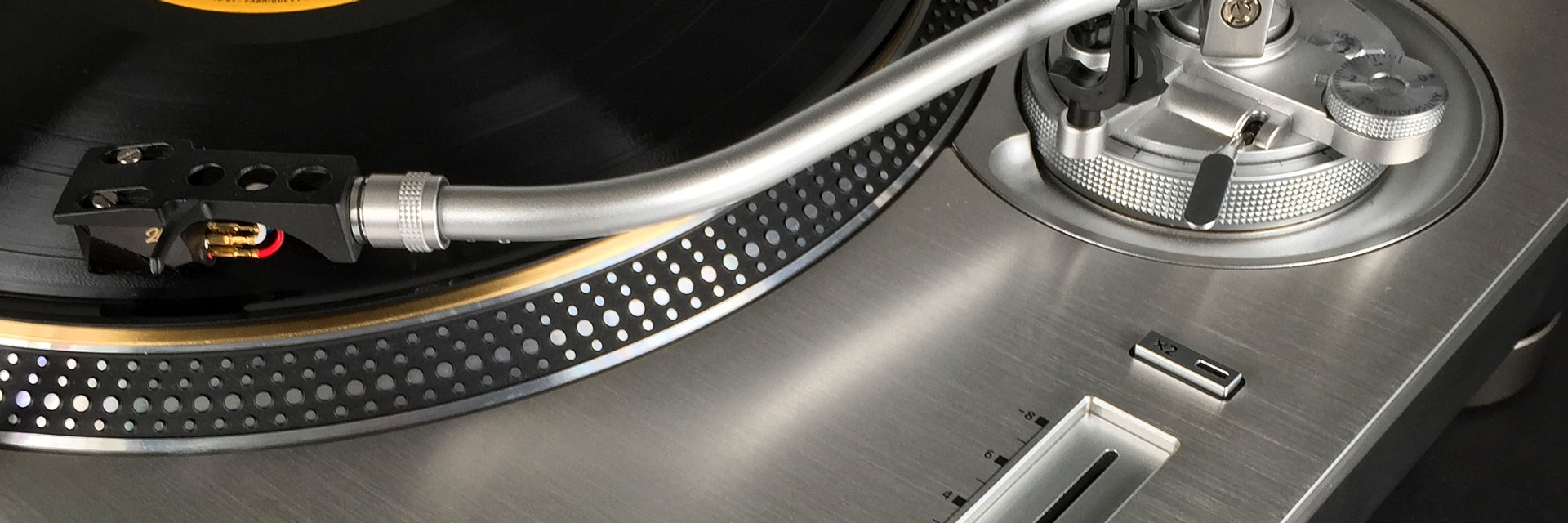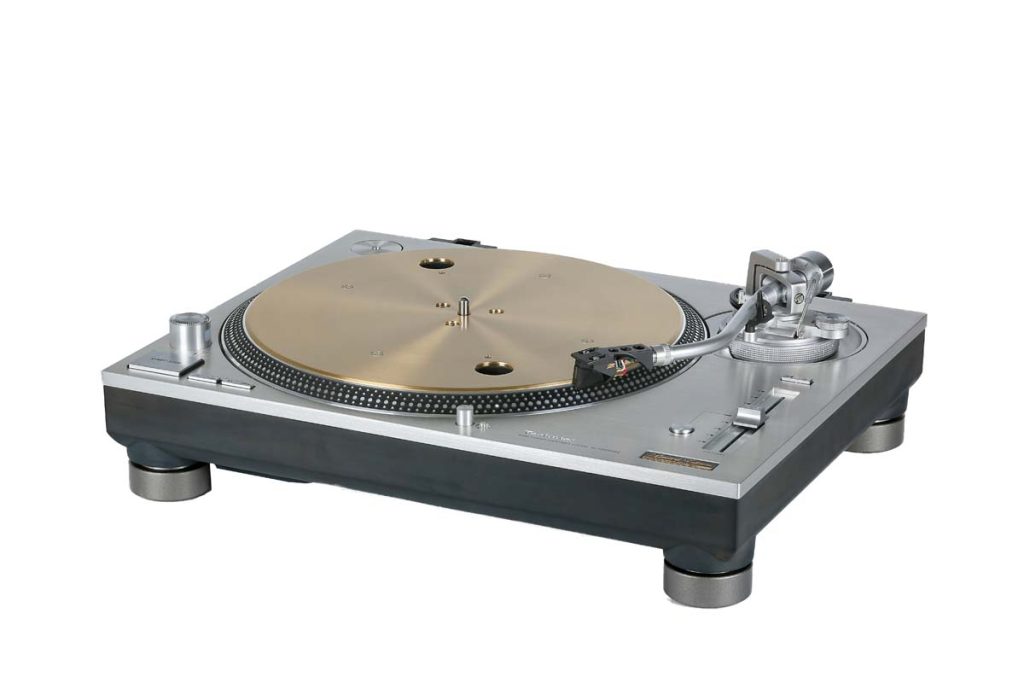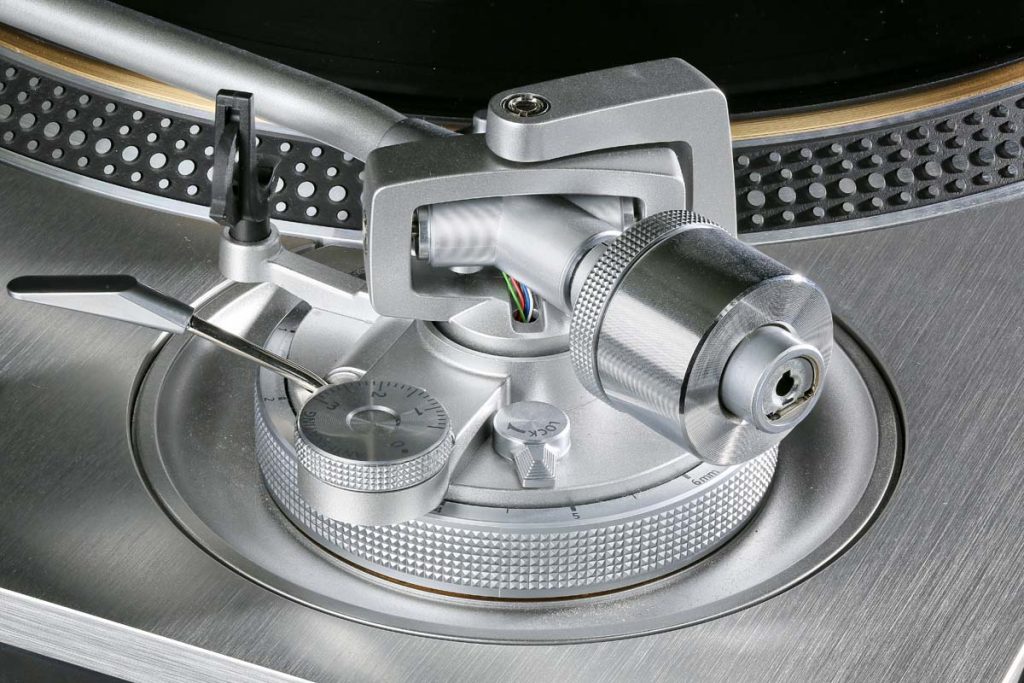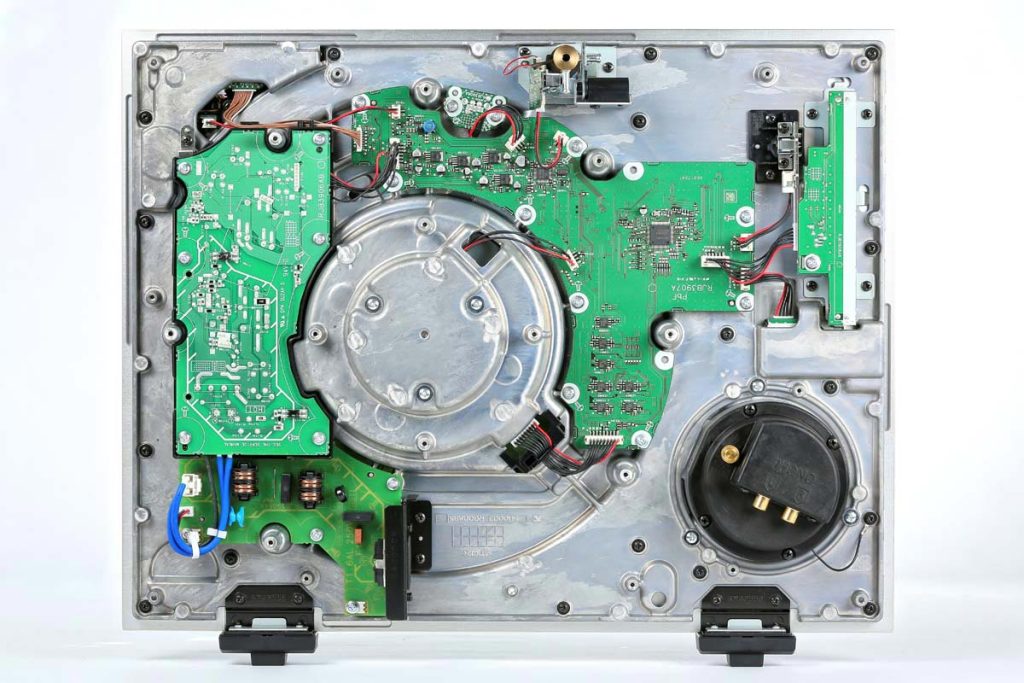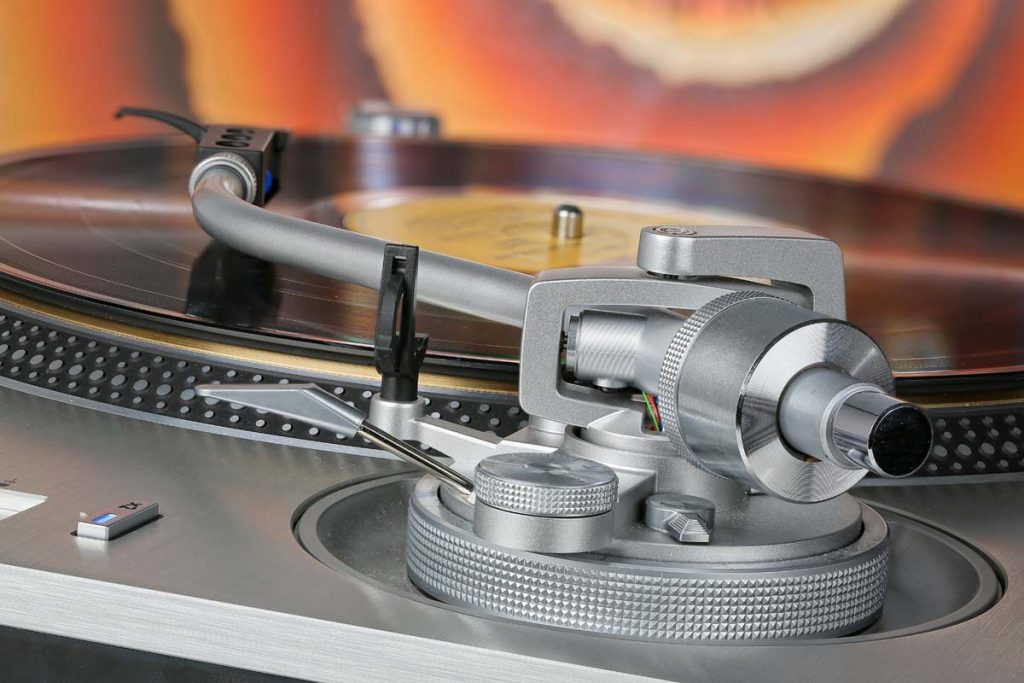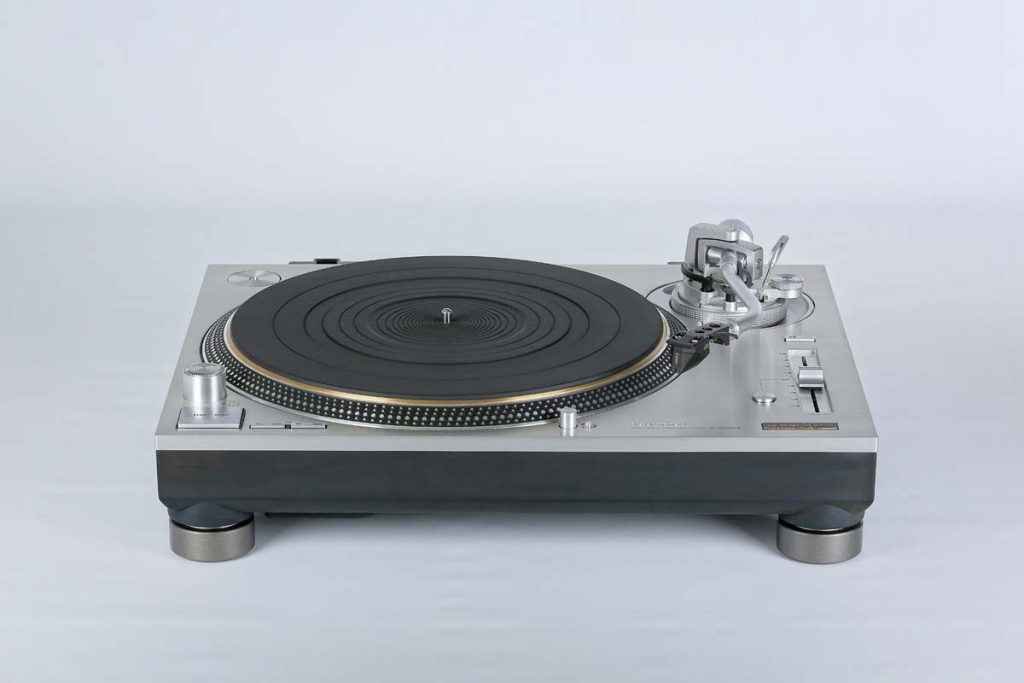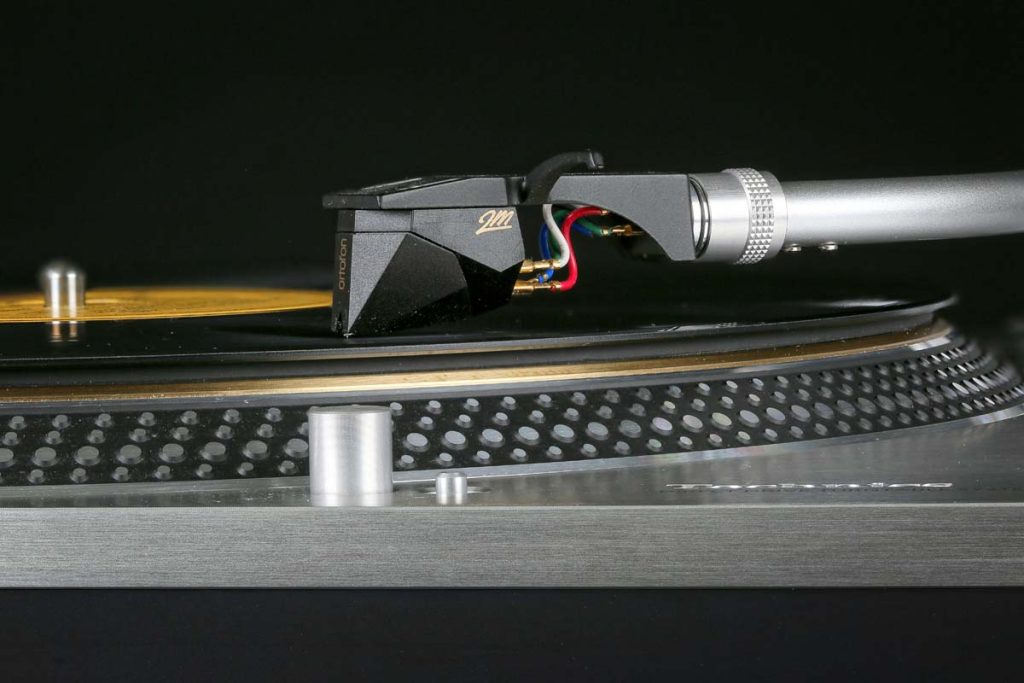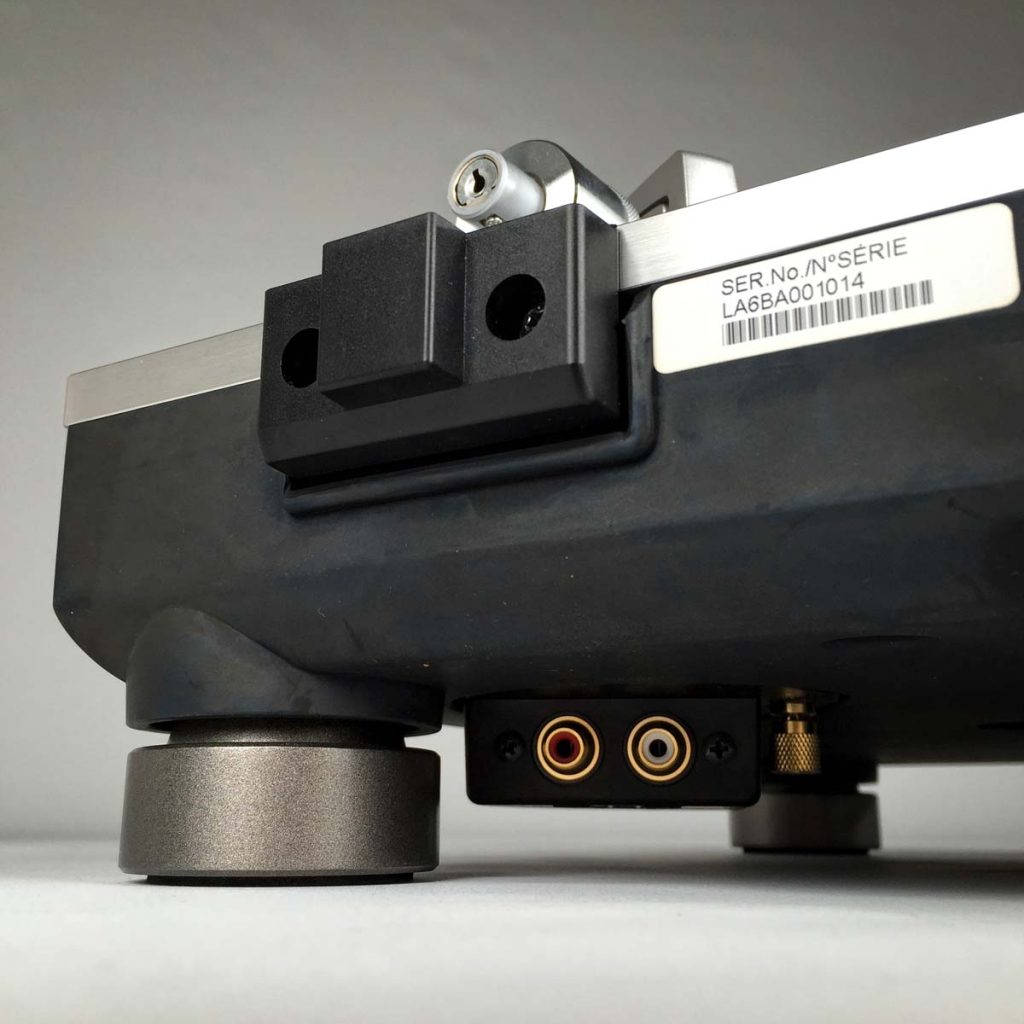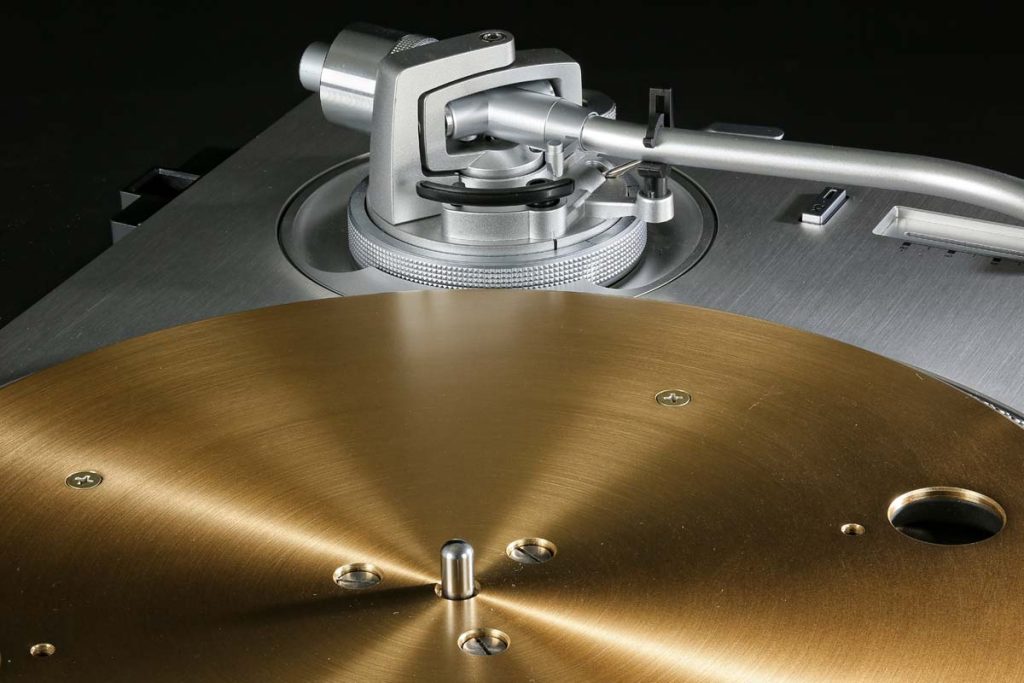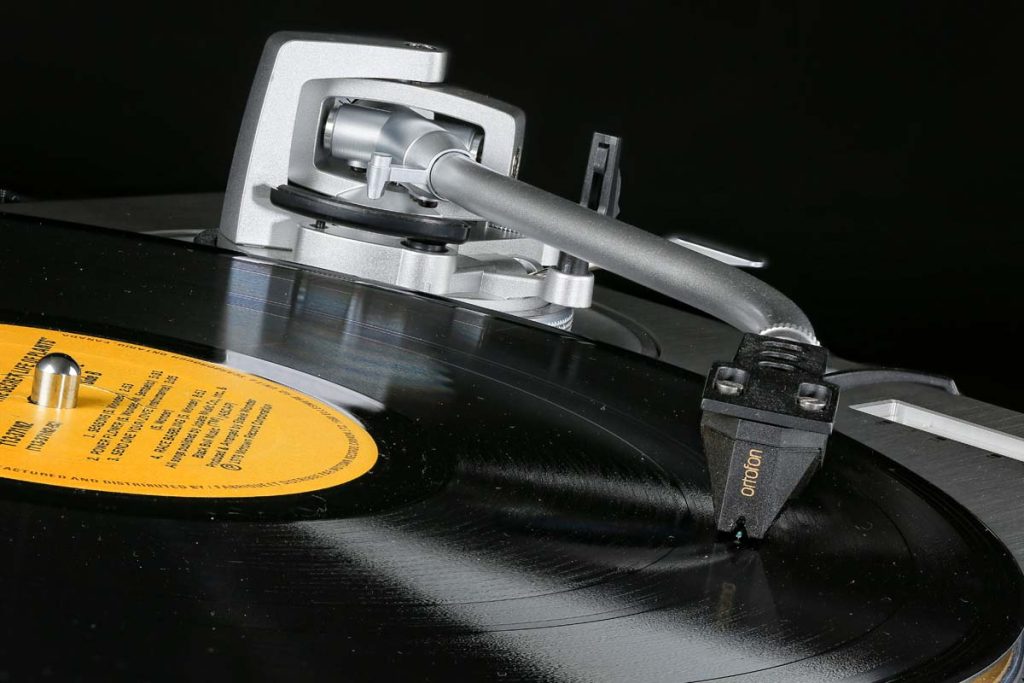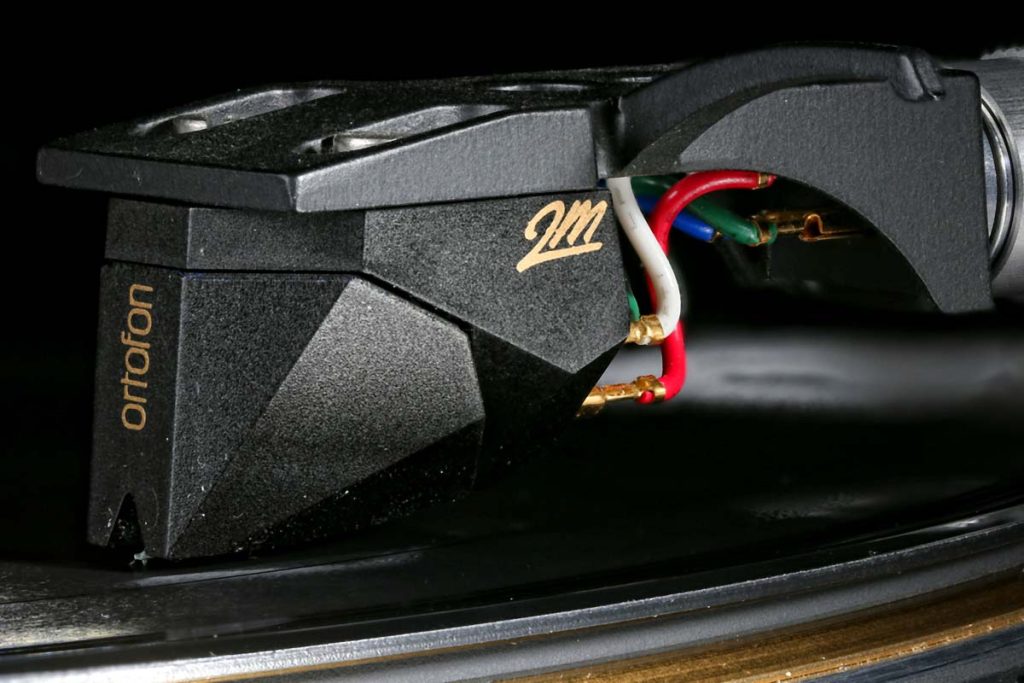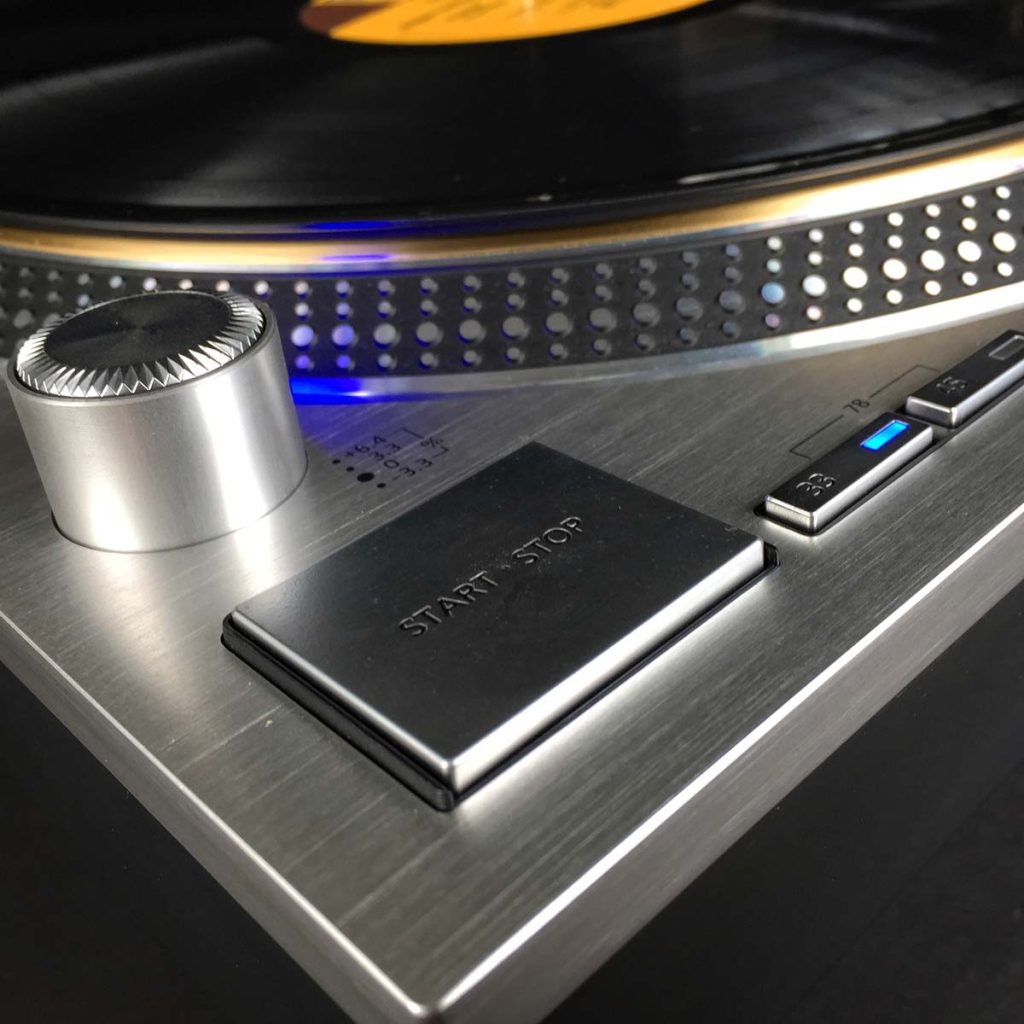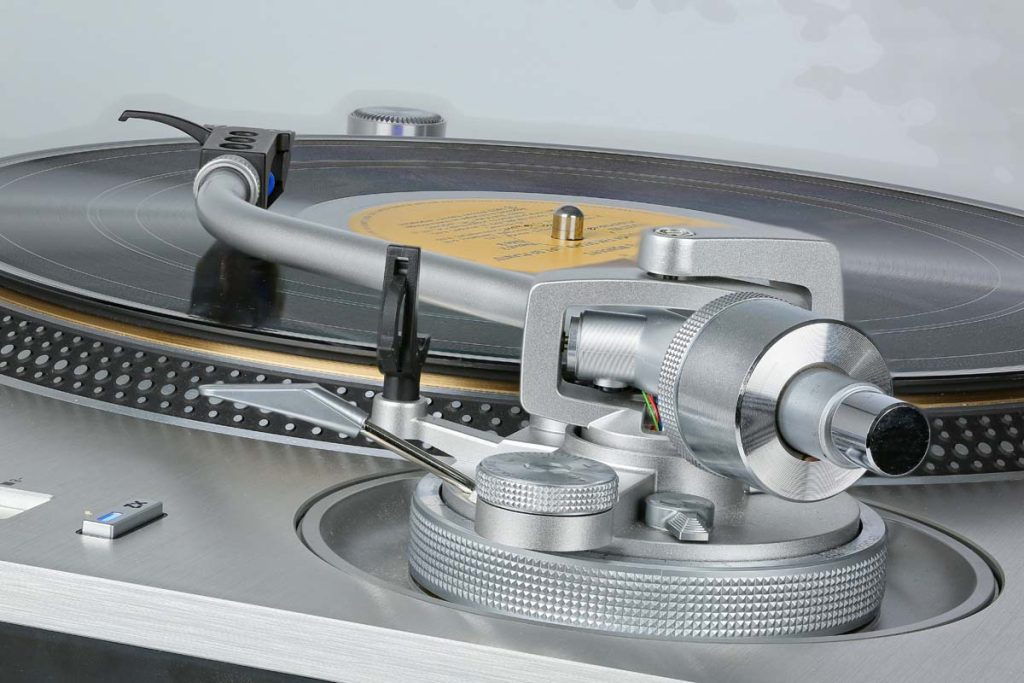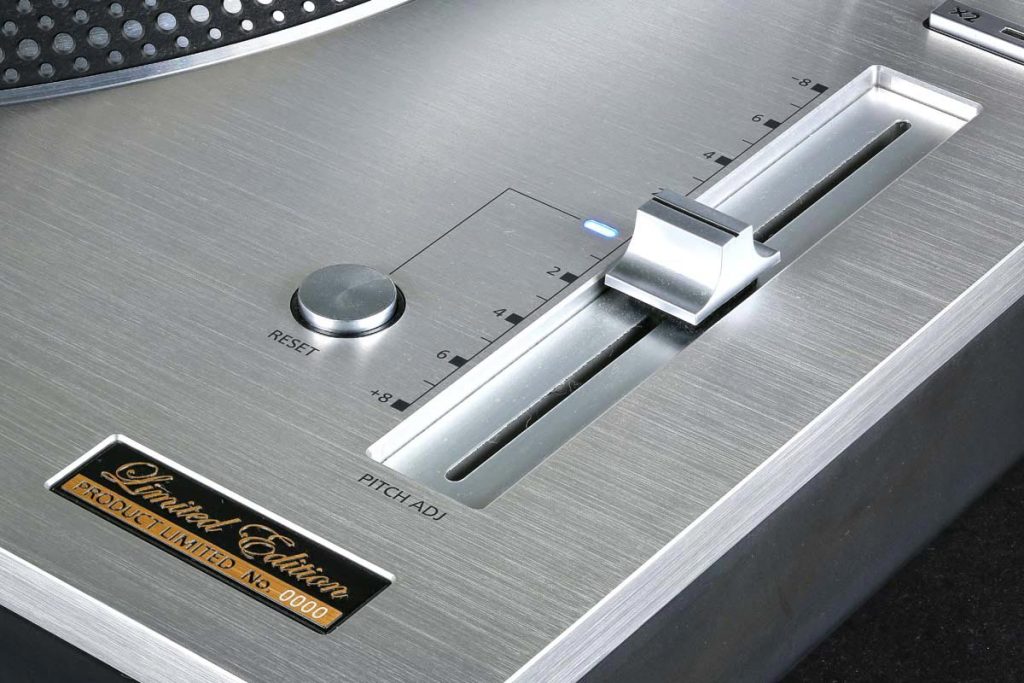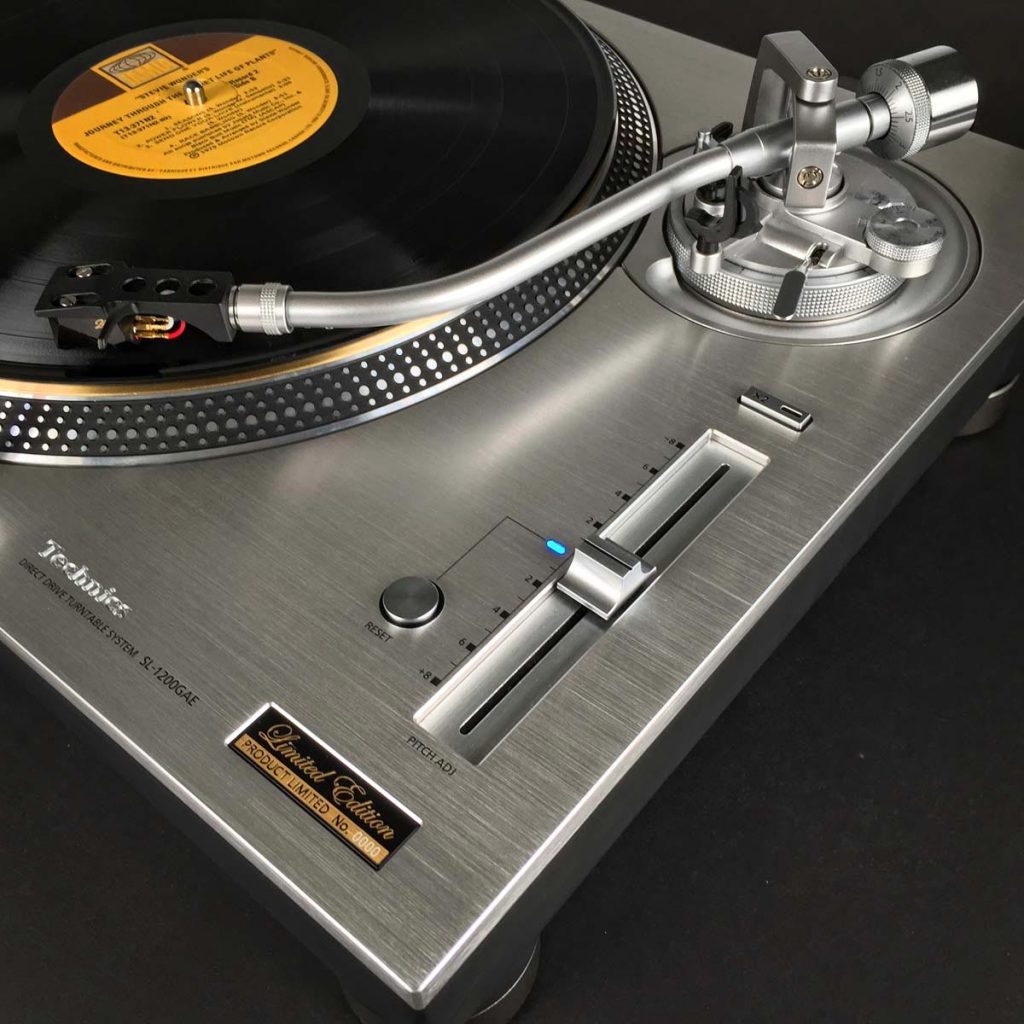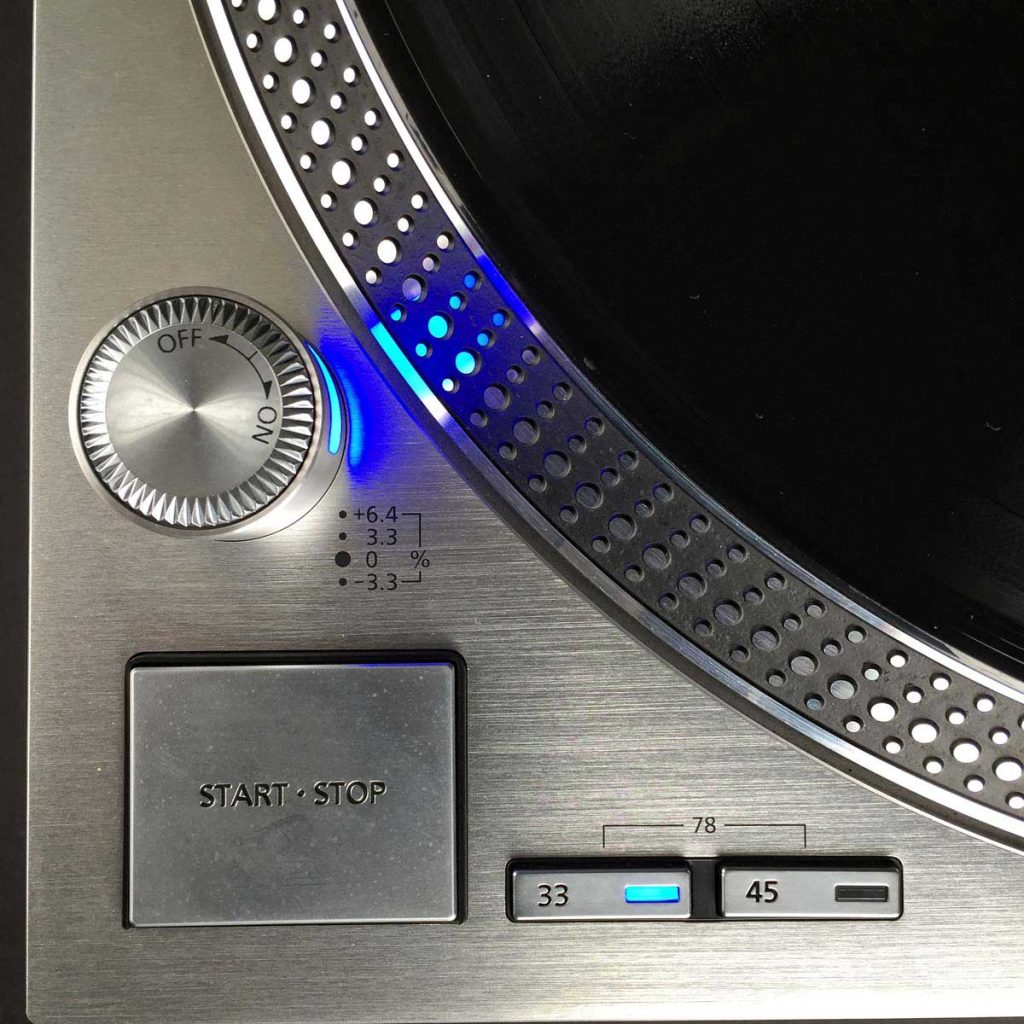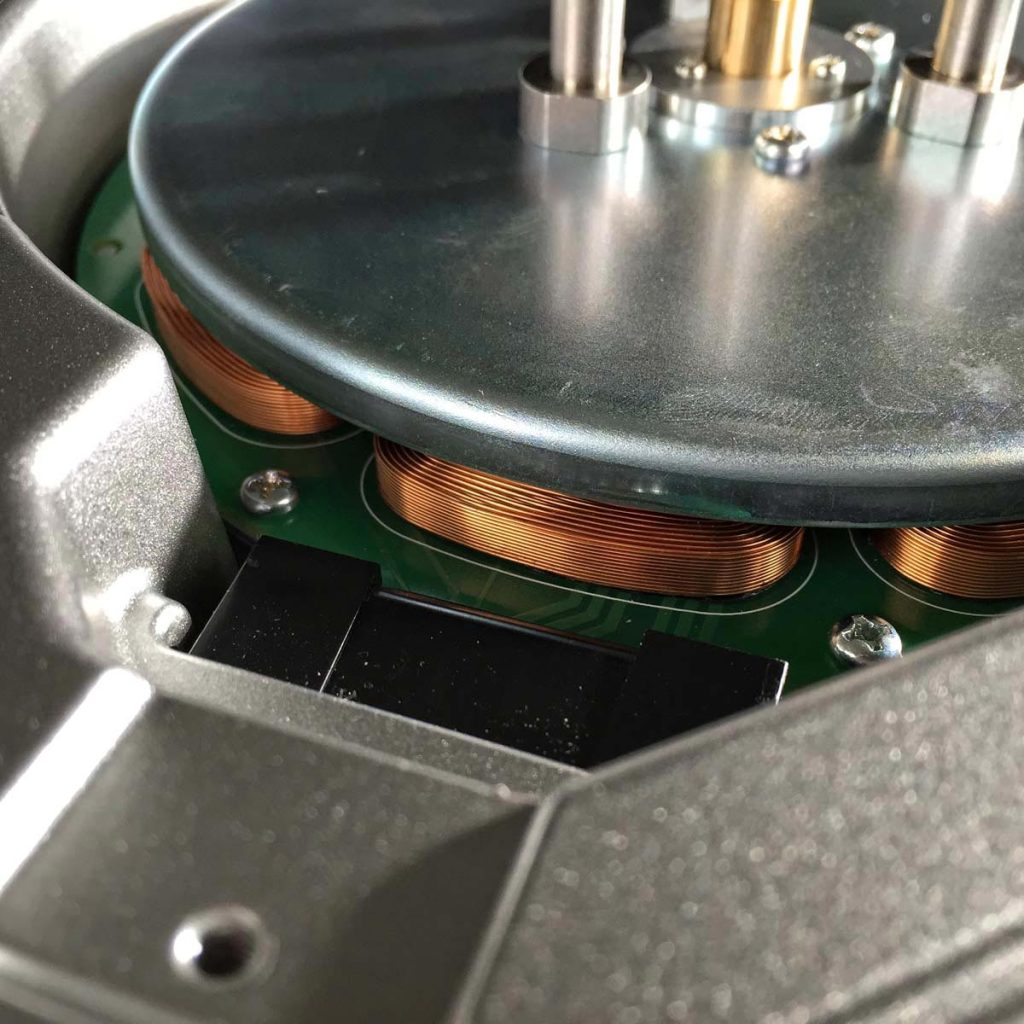I Will Survive
How retro can a global digital electronics company really be? Can You “clone” spirit? An inner dialogue.
”This is not equipment for a DJ. Otherwise, Technics would have just sent two SL1200GAEs and a mixer to match. Plus, €7,000 (€3,500 x two) is more than the whole sound system would cost in an average bar. And there’s more! It has a silver, 10-millimeter aluminum top panel, and the 1200 in the name (instead of 1210) pretty much means it’s predestined for home use. Clubs don’t want silver turntables. They just show all kinds of smudges on the surface.” That was the opinion of Agent 00 Soul on the rebirth of the most legendary direct drive unit in hi-fi history. Some may remember my cool black alter ego and one of his now somewhat older, but still, as always, style-defining DJ sets. He’s easily recognized with his gargantuan afro, which, at the end of a long night, will just barely peek out from under the mountain of panties flung in his direction. How sad it is then that as the sun rises “I” grow pale again and the kinky hairdo collapses on itself.
One way or another, the uncrowned king of the “Wheels of Steel,” as the 1210s are also known in DJ circles, has a point. If Panasonic had focused more on the DJ market, the SL1200GAE would have turned out differently in some respects. The competition hasn’t been sitting on its hands since the end of the 1210. Scores of pro DDs are now available, DDs that are better and more individually attuned to DJs’ requirements. Hip-hop MCs prefer the “plastic bomber” from Vestax (also no longer being produced since 2014) because it’s light and has straight tonearms. The new 1200 by contrast has put on a fair bit of weight, although its 18 kilos don’t really show, and the extra weight can only be found at absolutely sound-critical points. Electronic DJs are happy with Stanton, Reloop and even Numark, as they mostly use timecode vinyls anyway. These clones also provide pitch control up to 50 percent, whereas the 1210 had to be content with a measly 8 percent. Technics has cautiously followed suit on this point (as early as with the not very widespread 1210M5G): a dedicated push button allows the pitch control to be increased up to 16 percent. This was — with the 1210Mk2 at least — perhaps also already possible, but to do it, you had to open the turntable and adjust a blue plastic potentiometer. On the one hand, I can understand the 00 agent’s disappointment: Nothing has changed for him because two 1200GAEs together with his gold chains and gigantic afro will exceed the permitted axle load of his 1972 canary yellow Maserati Ghibli. On the other hand, I rejoice in the most sensational comeback since Bobby Ewing. I’m like a 10-year-old with his first mobile phone, although I have as much need for pitch control, torque control and a ramp-up time of 0.7 seconds as I do for digital volume control on a tube amplifier.
The fact that Technics has stuck with the design of the 1200 and 1210Mk2 is neither particularly original nor courageous. But why should the Japanese company abandon its iconographic DJ look to epigones? Ultimately, I would have actually gone more for the design of the original 1200, for the drive that caught the attention of the first hip-hop DJs because of its quick start-up direct drive and its resilience, as I find it more stylish and reflects more of its lineage, but Agent 00 Soul doesn’t share my opinion at all. And, if I’m entirely honest with you, I, too, have been hearing voices in my head since the SL-1200 joined the other equipment in the rack. Those voices say: “Mine, mine, mine…!”
So let me try — even if this is difficult — to consider the 1200 not in terms of what it represents, but rather in terms of what it would like to be: a hi-fi turntable with superb sound thanks to superior technology. The drive principle of the electro-magnetic coreless direct-drive motor is entirely based on developments that Technics was already using 30 years ago to minimize cogging. But experience has shown us that an almost fluctuation-free synchronization produced by rigorous quartz control does not guarantee good sound by a long shot. The 1200 discontinued in 2010 also suffered, I believe, despite the best possible production and exceptional technical values, from not being able to keep up in terms of hi-fi sound with simple belt-driven drives. It didn’t draw you into the music, but rather consistently kept you at a cool distance. Technics takes this view (as long as you can’t prove it, you really have to call it psychoacoustic) more seriously than most fans of the brand. A series of new developments ultimately aims to make the 1200GAE sound better. Using optical position control, the microcontroller generates a (as described by Technics), “soft” drive tension. The supplied sine curve actually runs with almost perfect uniformity in comparison with the 1200Mk2. Cogging is completely suppressed by this electronic sine wave generator, Technics proudly claims. Plus, microrotation vibrations of the coreless drive are minimized by a twin rotor that reduces stress on the bearing and increases torque at the same time. “And if the ramp-up time hasn’t been reduced, where’s the improvement?” asks the master of ceremonies, whom only I may call 00. And don’t forget either that at 3.3 kilos the platter of the new 1200 weighs more than twice as much as its predecessor’s. Heavier even than that of the Technics SP-10Mk2, the sturdy turntable used by broadcast stations worldwide, which also trails the new 1200 in terms of torque. I don’t want to go into the SP-10Mk3 here, as I haven’t seen any out there in the wild yet. But I am looking forward to the SP10Mk4’s data. (Hello Panasonic, wake-up call!)
I assume nothing has changed with the platter’s base. Why would it? It has, however, been given a solid brass plate affixed with four screws on the top and a rubber damper underneath, where a sticker with “Balanced” indicates its precision balancing. That supports my feeling that the center spindle is shorter so the platter appears to be thicker with the same bearing geometry. On the other hand, however, Technics claims they have constructed everything from the bottom up and carried out production using a new machine park. Moreover, persistent rumors are making the rounds in DJ circles to the effect that the 1210s from the most recent series were not produced as precisely as they once were, a problem that might be explained by worn molds. I have not, however, noticed anything of the kind to this point. As for the 1200GAE: Its level of workmanship cannot be compared with cheap cloning; informed fingers sense this immediately, especially on the bearing of the tonearm.
The old 1200’s tonearm should probably be considered the world’s best ever. The decades of mistreatment these parts have experienced could only be recounted as horror stories by other arms. But the favorably priced arm was never considered especially talented in terms of sound. Which is why in home systems many people had chosen to replace it with an SME 3009. No doubt it will be difficult to simply stroll past the new arm limited to 1,200 special models. The arm, still S-shaped, is the bomb! Because Panasonic had obviously disposed of the Technics analog legacy in such a hurry, Ms. Osawa had to request Nagao Tamagawa’s support with much kowtowing — the engineer had worked on the development of both the direct drive and the tonearm back in the 70s. Now in his 90s, Tamagawa not only agreed to contribute after all the flattering kowtowing, but also reintroduced long-lost precision-mechanics quality awareness into the thoroughly digitalized company, or so the story goes in a company video at least. “Heartwarming,” says Agent 00 Soul graciously. Against this backdrop it is little wonder then that nothing has changed in terms of construction. In material quality, however: The cold-formed magnesium tube of the arm hangs on four points in high-precision two-millimeter ball bearings and runs marvelously smoothly with no play. On the base it can be adjusted using a well-placed fine thread and can, of course, still be statically balanced. This is a light arm (unfortunately I don’t have any precise data at the moment), which would harmonize the best with top-ofthe-range MM systems. Technics is only too happy, and presumably not entirely coincidentally, to release the model with an Ortofon 2M Black. It’s a perfect match for the black headshell and runs in top form on the neutral drive.
I fervently hope the rumors on the net prove to be true, and the arm is also kept in the standard 1200G. The same applies for the silicone-gel rubber feet that swivel approximately 45 degrees to create a superb damping effect — a masterpiece of construction! Apparently an info block continues to be in place on the manufacturer’s end. You may possibly know more than I currently do by the time this magazine issue appears in your hands.
Without the hood, which continues to evince the characteristic protrusion above the cardan bearing of the tonearm, the 1200GAE doesn’t need much space. “If you brake the platter lightly on the edge, you will certainly feel the higher mass and the powerful drive. If, however, you’re cueing, it doesn’t feel compromised at all,” says the 00 Agent of soul music. Beat-laden electronic music is, by its very nature, no major challenge for a stable direct-drive unit. The true quality of a turntable is demonstrated with music that demands expression, which places the melody and the interpreter front and center — not exactly the prime disciplines of the old 1200. On a Teldec compilation, the Animals sound a little tinny with the midrange emphasized, which is fine, but Eric Burdon’s voice also sounds surprisingly energized; the spatial graduation in the depth is clearly perceptible. “He could have been a real soul brother if his band wouldn’t have precisely stressed every offbeat,” Agent 00 Soul pontificates. I loathe his summary judgments employing a constantly rigid black-white schema, but he’s nonetheless right most of the time. So, full-fat version with the young Aretha Franklin: “Ac-centtchu-ate The Positive”—absolutely! The superb, large-format recording presents a 20-year-old Franklin, whose voice is voluminous and fully trained, but doesn’t yet exude the dark coloring of her serenity, swinging instead in its stormy and youthful devilmay-care fashion. Here, delicacy is required by the reproduction chain — dedication, empathy and love of music. In such moments, the 1200GAE shows how fundamentally it differs from a paltry disco turntable. It is profound and deep in the bass, dissolves nicely in the midrange and presents highs smoothly instead of sharply, all the while managing to sound neither sped up nor sedated down. Its sober overview occasionally reminds you of the strict order of a Brinkmann Oasis, but without achieving its dynamic and background blackness.
I had a few concerns before this test. How objectively can you evaluate the successor of an immortal classic when it is many times more expensive? But the Technics SL-1200GAE (the abbreviation stands for Grand [Class] Anniversary Edition for the 50-year company anniversary) makes it easier for me. It leaves its predecessors and all its epigones lagging far behind in its wake. Entirely incorruptible, it allows itself to participate in the music — not just to present it, but rather to celebrate it. At €3,500, it comes at quite a price, but apparently the limited GAE model is already sold out. Here’s to hoping the standard 1200G is just as superb, but somewhat more affordable. “What are ya talking about, bro?” Agent 00 Soul butts in. “There are 1210s that have just been sitting in dark dives for 20 years, never seeing the light of day or a drop of oil. But you can just switch them on and off you go! Come on, man. Let’s sell the Maserati and get ourselves two SL-1200Gs and a forklift!”
Accompanying Equipment
Turntables: Feickert Analogue Firebird | Tonearms: Brinkmann 12.1, Mrch DP-8 | Cartridge: Ortofon Quintet Bronze and 2M Black, Audio-Technica 50ANV and 33PTG I, Clearaudio DaVinci, Stanton 680 V3 | CD player: Revox C 221 | Digital-to-analog converter: PS Audio Digital Link III, KingRex UD384 | Preamps: MFE Tube One SE (including phono) | Power amps: DNM PA3S | Integrated amps: Genuin Straight | Loudspeakers: Steinmusic Masterclass SP 1.1 | Cables: Musical Wire, Audiophil | Accessories: Steinmusic, Audiophil
Turntable
Technics SL-1200GAE
Functional principle: Directly driven turntable | Speed stages: 33/45/78 rpm | Speed control (pitch control): up to ±18% | Connections: Phono output (cinch), earth terminal | Special features: Direct-drive motor with twin rotor, newly developed motor control, highly sensitive tonearm, platter with brass plate, special vibration absorber | Dimensions (W/H/D): 45/17/37 cm (including dust cover) |Weight: 18 kg | Warranty period: 2 years | Price: € 3,500
Panasonic Germany
Winsbergring 15
22525 Hamburg
Germany
Phone +49 40 85490

